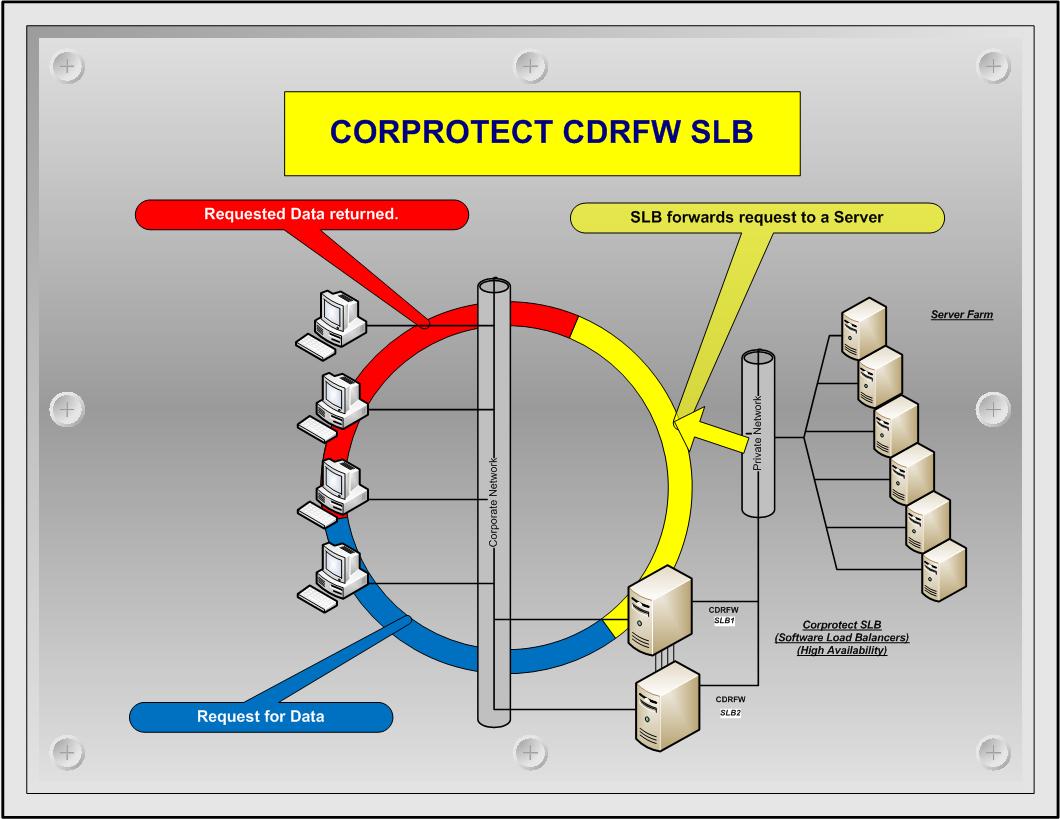
Software Load Balancer
The Software Load Balancer (CORP-SLB) provides a technique used to spread work load among many processes, computers, networks, disks or other resources, so that no single resource is overloaded.
Typically a single server is limited in how many users it can serve in a given period of time, and once it hits that limit, the only options left are to replace it with a newer, faster machine, or add another server and share the load between them. The CORP-SLB load balancer can distribute connections among two or more servers, proportionally cutting the work each has to do.
This allows for a cluster of servers to appear as if it was one server to an outside client. This apparent single server is called a “virtual server” and the individual servers (known as realservers) are under the control of a CORP-SLB which runs on the Cdrfw.
Methods
Layer-4 load balancing is used to distribute requests to the servers at transport layer, such as TCP, UDP and SCTP transport protocol. The load balancer distributes network connections from clients who know a single IP address for a service, to a set of servers that actually perform the work. Since connection must be established between client and server in connection-oriented transport before sending the request content, the load balancer usually selects a server without looking at the content of the request.
Layer-7 load balancing, also known as application-level load balancing, is to parse requests in application layer and distribute requests to servers based on different types of request contents, so that it can provide quality of service requirements for different types of contents and improve overall cluster performance. The overhead of parsing requests in application layer is high, thus its scalability is limited, compared to layer-4 load balancing.
Process
The ability to take realservers in and out of the CORP-SLB pool allows for individual server updates without affecting your production runtime environment or any down time.

